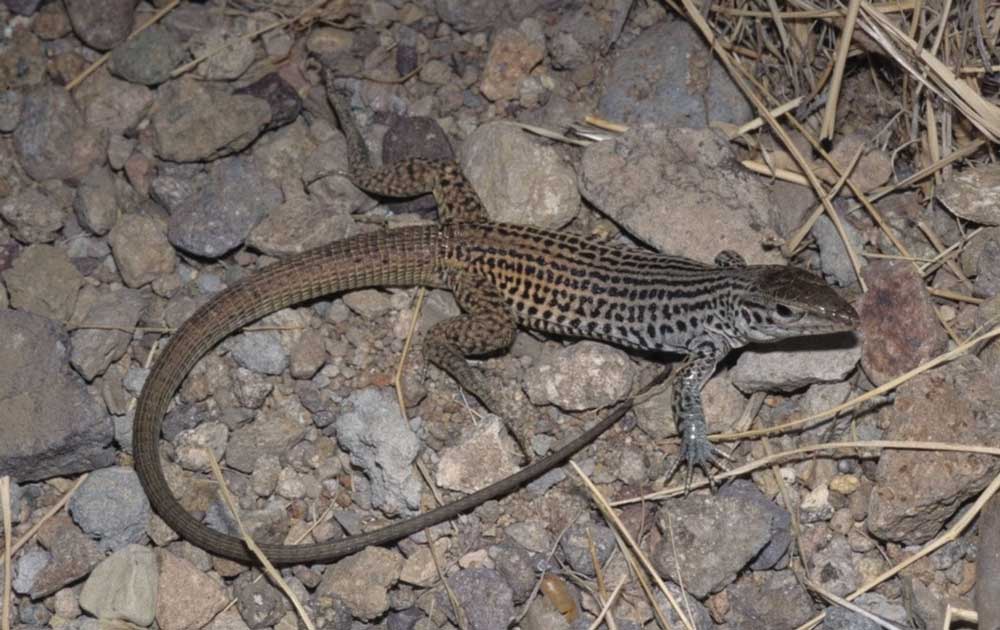Biologists at the university will sample the DNA of both lizards and if they are proven to be different genetically, the Dixon’s whiptail might be eligible for endangered species protections under the Endangered Species Act.
Researchers at the University of Texas have embarked on a search for the Dixon’s whiptail lizard (Aspidoscelis dixoni) and to determine if the lizard is the same genetically as the common checkered whiptail lizard, (Aspidoscelis tesselatus). The common Checkered whiptail lizard is a smaller reptile that bears significant similarities to the larger Dixon’s whiptail lizard.
Biologists at the university will sample the DNA of both lizards and if they are proven to be different genetically, the Dixon’s whiptail might be eligible for endangered species protections, according to a press release put out by the university.
Texas Parks and Wildlife Department Grant
“Thanks to a grant from the Texas Parks and Wildlife Department, we will be going to the mountains in far West Texas to capture and sample DNA from these critters,” Corey Roelke, a professor of instruction in biology at UT Arlington said in the statement. “It’s not easy to catch them. They’re all female, blend in well to their surroundings, and are very fast. We will rely on lizard lassos (basically fishing poles with tiny lassos on the top) and sticky traps to catch animals for sampling their DNA.” Roelke and biology Prof. Matthew Fujita will serve as lead researchers on the project.
When genetic samples are obtained from the Dixon’s whiptail and the common checkered whiptail, the researchers will genetically sequence the samples using a next generation genetic sequencer at the university. The researchers will also look at past genetic data on the lizards to compare.
“By examining thousands of single-nucleotide polymorphisms distributed across the genomes, we will be able to tell once and for all if Dixon’s whiptail is a different species,” Roelke said. “If it is distinct, then it is rarer than the common checkered whiptail and it will qualify for both state and federal protection under the Endangered Species Act.”
If there is no genetic differentiation between the two lizards, they will be given a single name. The project will begin at the start of 2025 and wrap up by the end of the year.
Whiptail Lizard Information
The Dixon’s whiptail lizard is also known as the gray checkered whiptail grows to about 8 to 12 inches in length, including the tail. It is gray in coloration with white or yellow stripes that run the length of the body. These stripes sometimes have spots or checkers on the stripes. It is diurnal, insectivorous and is parthenogenic. They are of the family Teeidae. The Dixon’s whiptail is currently considered by most to be a subspecies of the much smaller common checkered whiptail. Some consider it to be a full species. The genetic analysis in the University of Texas study will determine if it is indeed a separate species.



